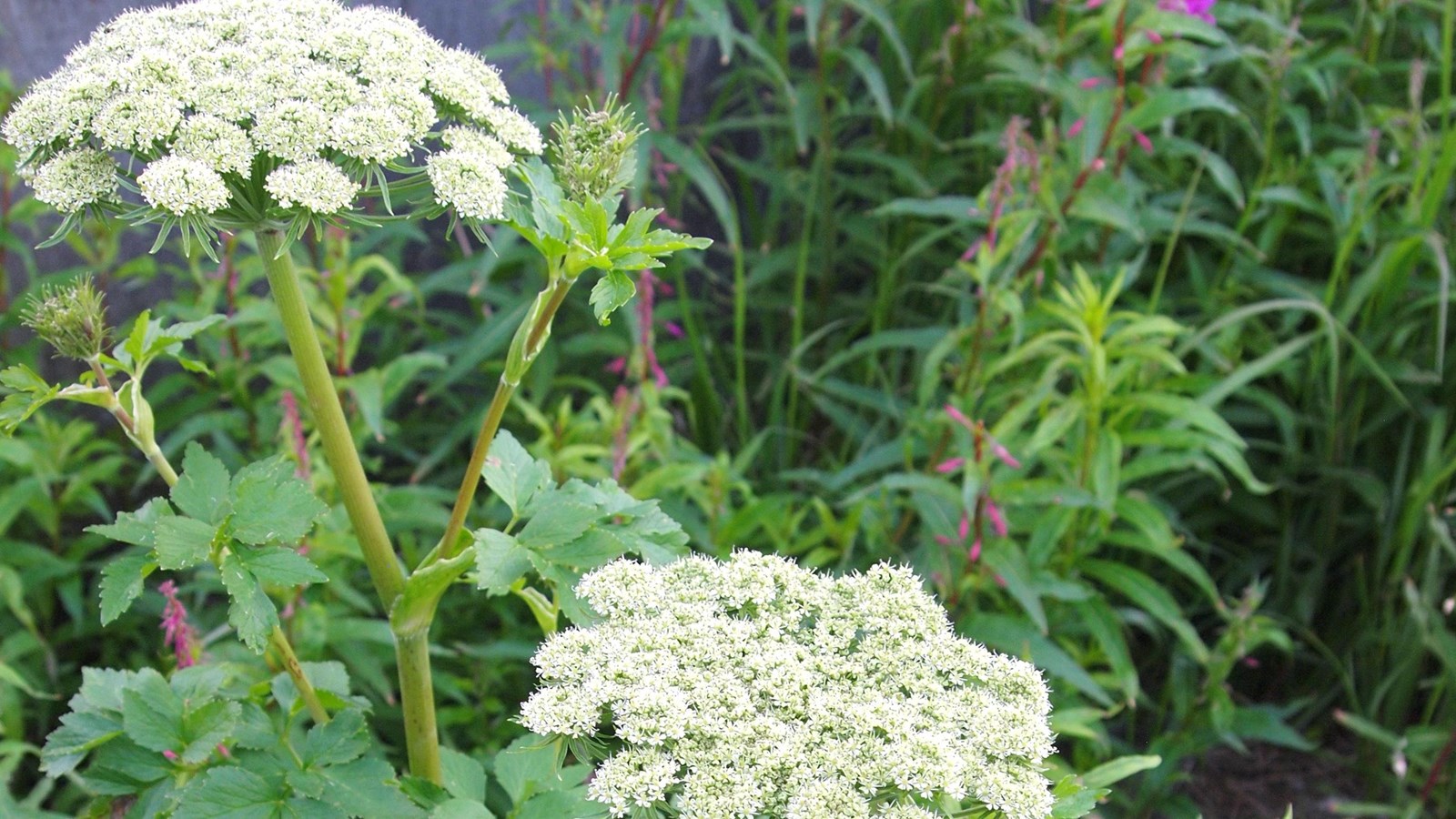Last updated: January 14, 2021
Place
Angelica at Western Arctic National Parklands

NPS/Linda Jeschke
Quick Facts
Location:
Northwest Arctic Heritage Center garden, Kotzebue AK
Significance:
Medicinal Plant
Amenities
2 listed
Scenic View/Photo Spot, Wheelchair Accessible
Angelica (Angelica lucida) is also called wild celery, wild parsnip or ikuusuk (with dialect variations: ikuusuuk/ikuusuich) in Iñupiaq.
The young shoots of this plant are edible, but the older the plant gets, the less edible it becomes. It is also extremely important to note that the root is toxic if ingested at any point. Only the stalks and leaves should be eaten.
Medicinally, Angelica has been used for hundreds of years, and around the world, not just in the Northwest Arctic. The root can be used outside the body to help for aches, pains, sores, cuts, and more. The best way to use the root is by cutting, mashing, and boiling it to create a poltice and then placing it directly on treatment area, even for deep pains.
Chewing on the leaves is said to cure a head cold and the many symptoms associated with it.
Native Siberians inhaled fumes of the roasted Angelica root for a seasickness remedy.
This plant should not be confused with the Poison Water Hemlock (Cicuta mackenzieana) which also grows in the region. There are many ways to tell these two plants apart. Wild celery smells strongly like celery. Its flowers are in a stiff, flat cluster with wide, flat leaves. Poision water hemlock on the other hand has loose flowers and thin leaves. It also has an obvious waxy look when compared to wild celery.
Sources:
The young shoots of this plant are edible, but the older the plant gets, the less edible it becomes. It is also extremely important to note that the root is toxic if ingested at any point. Only the stalks and leaves should be eaten.
Medicinally, Angelica has been used for hundreds of years, and around the world, not just in the Northwest Arctic. The root can be used outside the body to help for aches, pains, sores, cuts, and more. The best way to use the root is by cutting, mashing, and boiling it to create a poltice and then placing it directly on treatment area, even for deep pains.
Chewing on the leaves is said to cure a head cold and the many symptoms associated with it.
Native Siberians inhaled fumes of the roasted Angelica root for a seasickness remedy.
This plant should not be confused with the Poison Water Hemlock (Cicuta mackenzieana) which also grows in the region. There are many ways to tell these two plants apart. Wild celery smells strongly like celery. Its flowers are in a stiff, flat cluster with wide, flat leaves. Poision water hemlock on the other hand has loose flowers and thin leaves. It also has an obvious waxy look when compared to wild celery.
Sources:
- Jones, Anore. Plants That We Eat: Nauriat Nigiñaqtuat. Univ. of Alaska Press, 2010.
- Garibaldi, Ann. Medicinal Flora of the Alaska Natives: a Compilation of Knowledge... Alaska Natural Heritage Program, Environment and Natural Resources Institute, University of Alaska Anchorage, 1999.
- Schofield, Janice J. Discovering Wild Plants: Alaska, Western Canada, the Northwest. Alaska Northwest Books, 1995.
